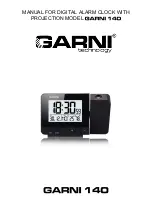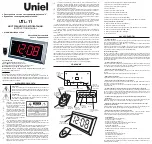
Fire Initiating Devices and Notification Appliances Technical Manual
408
Intelligent Products Section
Technical Bulletin
Issue Date
1095
©
1995 Johnson Controls, Inc.
1
Code No. LIT-408075
Introduction
Page
3
●
General Description
4
Installation Procedures
7
●
General Description
7
●
Spacing
7
●
Wiring Installation Guidelines
7
●
Installation
8
●
Tamper-Proof Feature
9
Testing and Maintenance Procedures
11
●
Testing
11
●
Maintenance
14
●
Limitations
16
2551J and 2551TJ Plug-In Intelligent
Photoelectronic Smoke Detector
Summary of Contents for 2551J
Page 2: ...2 Intelligent Products 2551J and 2551TJ Plug In Intelligent Photoelectronic Smoke Detector ...
Page 6: ...6 Intelligent Products 2551J and 2551TJ Plug In Intelligent Photoelectronic Smoke Detector ...
Page 10: ...10 Intelligent Products 2551J and 2551TJ Plug In Intelligent Photoelectronic Smoke Detector ...


































